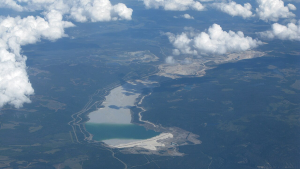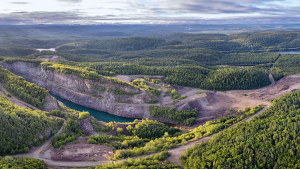The City of London, Ontario announced Monday that it has found more PCB-contaminated soil along the bank of Pottersburg Creek, as part of a testing program in areas requiring construction work to control erosion. The Middlesex London Health Unit said there is no public health concern but the concentration of the samples are greater than 20 parts per million. The city will continue to seek technical advice from the Ontario Ministry of the Environment.
The City of London, Ontario announced Monday that it has found more PCB-contaminated soil along the bank of Pottersburg Creek, as part of a testing program in areas requiring construction work to control erosion.
“Erosion has exposed these small areas of historic contamination and the City will continue to seek technical advice from the (Ontario) Ministry of the Environment to develop a plan of action which will include some materials being removed,” the City of London stated in a press release. “As a precaution, and in keeping with normal site work protocol, the City will continue to maintain a fence around the area.”
In July, the City of London received preliminary PCB test results of sampling carried out in preparation for the design of bank remediation works.
The site is owned by The London Assembly Hall of the Jehovah Witnesses at 459 Second Street and is in the vicinity of what was once the largest storage site of polychlorinated biphenyls, or PCBs, in the province.
View Larger Map
In 1984, Westinghouse Canada, which manufactured electrical equipment in the area, was ordered by the Ontario Ministry of Environment to create a PCB storage site. During the 1980s, a committee determined that soils with PCB levels of less than 20 parts per million could be placed safely along the Pottersburg Creek floodplain and capped with a 15-cm layer of soil and grass. The committee that made that determination had representation from the federal and provincial Environment ministries and the National Research Council.
Initially, contaminated soil was stored in non-permeable vaults in London. After the federal government changed the PCB regulations in 2008, the Ontario Ministry of Environment paid for the removal of soil with concentrations of more than 20 ppm from the site. The province declared the cleanup complete last year. But in the summer of 2011, four soil sample results were discovered to have higher concentrations of PCBs (128, 108, 84.6 and 37.3 ppm) in two isolated areas that measure approximately two square metres each.
The Middlesex London Health Unit said there is no public health concern.
“Ongoing management and care of the watershed will always be required to ensure the situation continuously improves and that any identified issues are addressed,” the City stated. “It is important for the community to understand that data show the overall situation is much improved along Pottersburg Creek and that the City, Health Unit and MOE will continue to monitor and take appropriate action as needed. The City intends to complete the design of these and other remediation measures for the creek and proceed with the work early this fall.”
DCN DIGITAL MEDIA










Recent Comments
comments for this post are closed